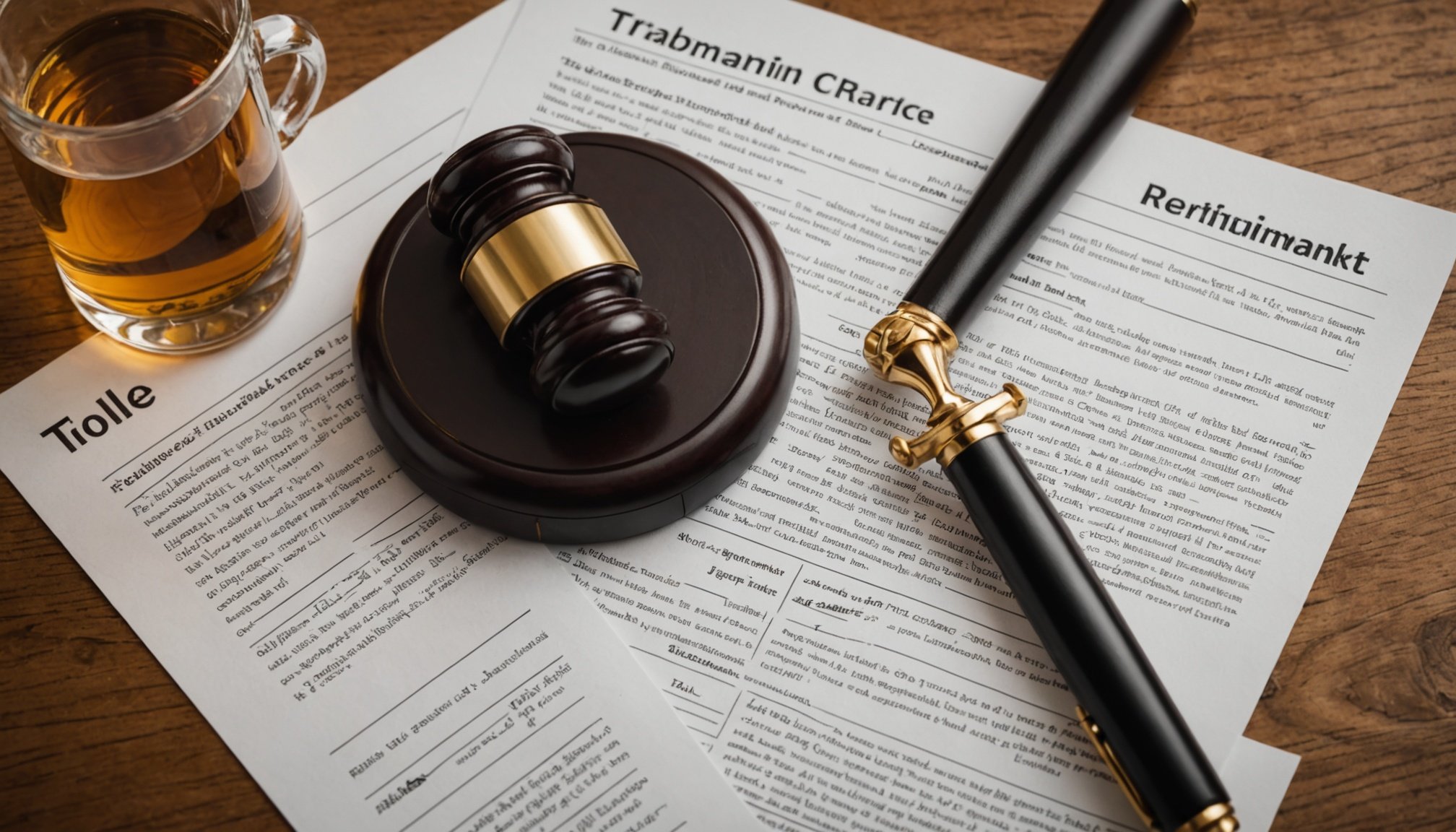Understanding Trademark Law in the UK
Trademark law in the UK is essential for business identity protection and establishing a legal framework that brands can rely on. It encompasses a range of rules and regulations designed to safeguard the unique identity of businesses. At the heart of trademark law is the registration of symbols, logos, or marks that distinguish goods and services and prevent copying or misuse by others.
The legal framework provides comprehensive protection for registered trademarks, ensuring that businesses can operate without the threat of misuse by competitors. This affirmation of identity enhances consumer trust and loyalty, which is valuable in the market. A registered trademark gives the owner exclusive rights to use, license, or sell the trademark.
Topic to read : Mastering legal compliance: an essential uk guide for businesses implementing automated decision systems
Key definitions within trademark law include terms such as “distinctive” and “non-descriptive,” which are crucial when evaluating a trademark for registration. A trademark must be distinctive, meaning it clearly identifies the source of a product, and not merely descriptive of the product itself.
Ultimately, the significance of trademarks lies in their role as a tool for branding and differentiation. By protecting intellectual property through trademarks, businesses can ensure their brand identity remains unique and intact. The UK’s trademark laws are designed to support this vital aspect of business strategy.
In the same genre : Key approaches for uk companies to ensure data security when outsourcing it services
The Trademark Registration Process
Trademark registration in the UK is a structured process managed by the UKIPO (United Kingdom Intellectual Property Office). It is essential for protecting business identity and leveraging your unique brand. Understanding this process helps businesses safeguard their assets effectively.
Steps to Register a Trademark
-
Conduct a Search: Before application, verify no existing trademarks are similar. This can prevent infringement disputes.
-
Prepare Your Application: This involves selecting classes that represent the goods/services associated with your mark. Providing a detailed description is crucial, ensuring the trademark aligns with your brand identity.
-
Submit to UKIPO: Applications go through a formal review. If not challenged, registration follows. Official fee payment is necessary here.
Common Mistakes in Registration
Not conducting a thorough search or incorrectly classifying your trademark can delay or jeopardise registration. Inadequate description or incomplete application details are also common pitfalls.
Timeline and Costs Associated with Registration
The process typically spans 4-6 months, varying per case. Costs can differ based on the number of classes and the complexity of your application. Anticipating these aspects allows businesses to plan effectively for expenses related to their trademark.
Types of Trademarks
Different types of trademarks provide varying levels of protection depending on business needs. Understanding these can guide you in choosing the right trademark for your company.
Overview of Different Types
-
Word Marks: These consist of words, letters, or numerals. They protect how a brand name appears in written form. A word mark is versatile, safeguarding your brand name across different fonts and designs.
-
Logos: A visual symbol or design representing a brand. It often combines images with text to create a recognizable identity. Logos not only protect the artistic design but also how it ties to the brand.
-
Shapes: Protect distinct shapes that uniquely identify a product. For example, a unique bottle design can be a trademark if it distinguishes a brand’s goods from others.
Trademark Classifications
Trademark classifications are crucial as they identify the goods and services your trademark will cover. Selecting the appropriate classes ensures comprehensive business identity protection.
Choosing the Right Type
Assess what aspect of your brand requires the most protection. Is it the name, visual logo, or product packaging? Understanding your brand’s core identity will help in making a strategic decision, ensuring effective trademark protection.
Relevant Laws and Regulations
Understanding trademark law in the UK is crucial for safeguarding intellectual property rights and ensuring legal compliance. These legal frameworks provide the backbone for protecting business identities and navigating the complexities of international branding. Here’s how trademark regulations impact businesses:
Overview of Key Legislation
Trademark law in the UK is governed by the Trade Marks Act 1994. This legislation outlines the criteria for trademark registration, emphasizes what constitutes infringement, and explains the role of the UKIPO in managing trademark applications. Key terms, such as “distinctive,” play a significant role in legislation, ensuring that trademarks accurately represent the company and are not easily confused with others.
International Considerations for UK Brands
For UK brands expanding globally, understanding international treaties like the Madrid Protocol is essential. This treaty simplifies acquiring trademark protection across multiple jurisdictions, making it easier for businesses to manage their intellectual property internationally.
Enforcement of Trademark Rights
Enforcing trademark rights is vital. UK law provides several avenues to combat infringement, including litigation, injunctions, and negotiated settlements. A robust enforcement strategy helps maintain brand integrity and can deter potential infringers, providing a competitive edge in the marketplace.
Case Studies and Real-World Applications
Exploring trademark case studies in the UK offers valuable insights into effective brand protection strategies and the dynamics of trademark disputes. Successful brand protection stories illustrate the critical role trademarks play in preserving business identity and long-term consumer trust.
One notable case is that of “Cadbury’s iconic purple,” where the company sought to trademark the specific shade used in its packaging. This effort showcases how even colours can become part of a brand’s identity. However, understanding the complexity of such trademarking attempts and their potential challenges is vital for businesses considering similar actions.
In another example, the Apple Corps vs. Apple Inc. case highlights the importance of clear agreements in trademark coexistence. This long-standing dispute over name usage demonstrates how undefined boundaries can lead to lengthy legal entanglements.
Lessons from less successful attempts, like the failed registration of KitKat’s shape by Nestlé, underscore the importance of distinctiveness when seeking trademark protection. The European courts ultimately ruled against Nestlé, illustrating that shape trademarks require substantial evidence of consumer recognition for success.
By analyzing these cases, businesses can glean key takeaways on the significance of strategic planning, thorough legal understanding, and evidence-backed applications in safeguarding their trademarks.
Practical Steps for Safeguarding Your Brand
Achieving business identity protection requires proactive strategies in trademark maintenance and enforcement. Implementing these practical steps enables brands to safeguard their identity effectively.
Monitoring and Enforcing Your Trademark
Continuous monitoring of your trademark is crucial in maintaining its exclusivity. This involves keeping an eye on the market for any unauthorised use of your mark. Should you identify an infringement, swift enforcement action is essential. Methods include sending cease-and-desist letters or pursuing legal action. Maintaining vigilance ensures persistent brand protection.
Maintaining Trademark Registrations
Regular updates and renewals are vital in keeping your trademark registration active. Trademarks typically require renewal every ten years in the UK. Ensuring up-to-date documentation prevents legal issues and supports ongoing rights to your mark. It is advisable to use a trademark attorney for managing these renewals efficiently.
Dealing with Infringements
Facing infringement demands a strategic response. Begin with a thorough review of the alleged infringement to ensure it genuinely violates your trademark rights. Next, consider negotiation or alternative dispute resolution methods before litigation. Effective response plans not only protect your brand but also underscore its value to stakeholders and competitors alike. An informed approach is essential to safeguarding your business identity.
Resources and Additional Guidance
When approaching trademark law in the UK, utilising legal resources UK is crucial for trademark support. These resources offer expertise and assistance to navigate the legal framework effectively, ensuring robust business identity protection.
Legal Experts and Trademark Support
Engaging with legal experts is a valuable step. They provide tailored advice, ensuring your brand adheres to trademark regulations. Experienced attorneys can help you draft applications and resolve disputes efficiently. Using their insights can prevent costly legal issues later.
Government Websites and Tools
For detailed guidance, the UK government provides comprehensive tools and resources. The UKIPO website is a primary portal, offering guidelines on the trademark registration process. This platform is instrumental for those seeking structured, reliable information on intellectual property rights.
Further Reading and Educational Materials
Expanding your knowledge through additional reading can fortify your understanding of trademark laws. Exploring educational materials, such as books or online courses, can enhance your legal proficiency. These resources can help in mastering the intricate aspects of trademark law UK.
By leveraging these resources, businesses can navigate the complexities of trademark law with greater confidence, ensuring their brand identity remains protected and compliant.











